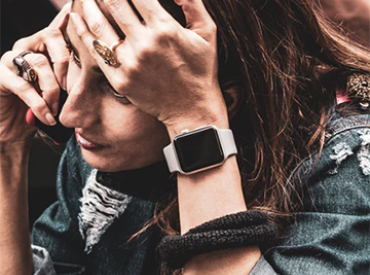US TV Star Rosie O’Donnell Talks About Her Female Pattern Hair Loss
Often the best way to deal with something that’s bothering you is to talk about it an approach that US talk show host and actress Rosie O’Donnell decided on when it came to the issue of hair loss.
The famously outspoken nemesis of Donald Trump took to Twitter to share her hair loss issues with the world: her short and simple Tweet that read, “male pattern baldness… aging is fun” was accompanied by a picture of the TV star pointing to thinning hair on her temple and started something of a Twitter storm.
Empathy for brave exposure
Yahoo Beauty
, which picked up on the story, said that “The brave exposure prompted a flood of likes and empathetic comments some of which offered advice (take biotin and vitamins, check your thyroid, stop pulling your hair back so much) but many were from women who are having a similar experience.
It seems that Ms O’Donnell’s public sharing of her thinning hair issues resonated with a huge number of women who are similarly affected.
Whilst from Ms O’Donnell's picture she patently does not have Male Pattern Baldness a genetic condition almost always reserved, as its name suggests, for men - it is actually possible for women to have male pattern baldness, and vice versa. This diagnosis comes when a woman's hair loss is genetic in nature but the pattern of shedding fits that more commonly associated with the male shedding.
Male Pattern Baldness tends to appear in very visible areas such as the crown and the hairline, whereas Female Pattern Hair Loss is usually more of an all-over thinning. It is generally most noticeable at the parting as this can start to appear wider, and at the temples which can thin - as in Ms O'Donnell's case - as well as an overall loss of volume. However both male and female conditions only affect the top of the head.
Female Pattern Hair Loss affects women in huge numbers, too and, whereas this used to be something that happened later in life to women than to men, with the pressures of modern life, studies have shown that more women than ever are starting to lose their hair in their 20's. The Yahoo Beauty article, in fact, claims that women make up about 40 per cent of Americans who have hair loss conditions, whilst in the UK Belgravia has noticed a steady increase in female clients over the years.
As with men, genetic hair loss is the most commonly-seen hair loss complaint in women so, pondering why we don’t hear more about female hair loss, the Yahoo article notes that women are often more easily able to conceal their thinning than men. As women typically have more (longer) hair to play with than men, concealment of the condition using hairstyles or accessories - even hair extensions despite the fact that these can actually make the problem much worse - is often possible.
Women's hair loss can be treated
“Women are very often surprised that they too can be affected by genetic hair loss,” says Leonora Doclis, senior hair loss specialist at Belgravia. “Many women who come to see us have no idea what is causing their hair to thin and lose its volume, but what a large number of them are actually experiencing is the onset of Female Pattern Hair Loss, a permanent and progressive condition they have inherited from their parents and which will continue to cause shedding unless treated.”
The good news is that this can indeed be tackled, just as it can in men and, at Belgravia, bespoke women's hair loss treatment courses devised by specialists to tailor to each individual client's personal needs, have helped many thousands of women.
Expert help begins with a diagnosis and is followed by information and advice about the condition. A recommended treatment course, generally based around an appropriate preparation of high strength minoxidil from one of the many available from Belgravia's in-clinic pharmacies aided by hair growth boosters, then follows if the client so wishes, as does careful monitoring of the condition over the following months, with adjustments made to the treatment as needed.
Now that Ms O’Donnell has opened up about her hair loss, the sensible next step would be to seek out professional help from an expert who knows hair loss conditions inside and out. With relatively few exceptions, this type of thinning can often be improved with the right kind of treatment advice.

The Belgravia Centre
The Belgravia Centre is a world-renowned group of a hair loss clinic in Central London, UK. If you are worried about hair loss you can arrange a free consultation with a hair loss expert or complete our Online Consultation from anywhere in the world for home-use treatment.
View our Hair Loss Success Stories, which includes the world's largest gallery of hair growth photos and demonstrates the level of success that so many of Belgravia's patients achieve.



